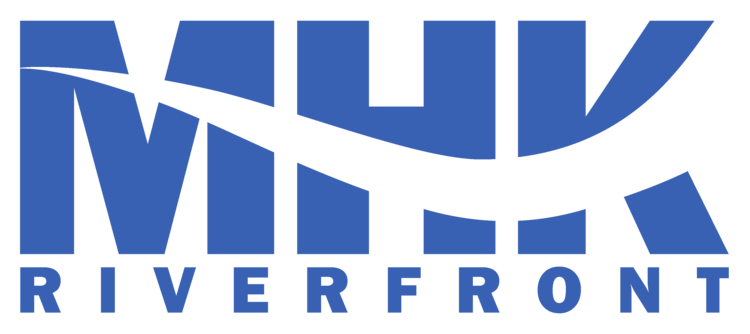Making Space for Diversity
Madison Dalke
This design offers a diverse range of activities that every visitor can be involved with. These activities showcase the unique personality that every human has. Activities for users include family and group picnic areas, play mounds, group seating and individual seating, as well as hammocks. Another aspect of the design is the introduction of different eco-zones to promote biodiversity on the site. Visitors are able to connect to the site by a pedestrian bridge that travels over Ft. Riley Blvd, the train tracks, Linear Trail, and the Kansas River. Along the bridge, there are viewing points to showcase the wildlife. Other experiences that happen on the bridge include a butterfly enclosure and a bird ledge. The bridge not only connects Manhattan to the Kansas River, but it also provides a connection between the diverse human population and the diverse world of animals, plants and wildlife attracted to the Kansas River.
Figure 6.1 Site Plan
The design of the bridge represents the Flint Hills of Kansas. The undulating form connects the riverfront site to Manhattan and the regional characteristics of the area.
Butterfly Enclosure
View Point
Bird Ledge
Figure 6.3 Viewing Point
As visitors walk along the pedestrian bridge they are able to stop at different viewing points that are separated from the main pathway. At these viewing areas, users can sit and view the wildlife that is attracted to the area.
Another experience on the bridge is the Butterfly Enclosure designed to attract and accommodate butterflies and other insects. The bridge gently encloses around the visitors, fully immersing them in the experience of the butterflies.
Figure 6.4 Butterfl y Enclosure
The bird ledge provides a place for visitors to view the different species of birds that have come to the Kansas River. One side of the railing rises up to create a perch for the birds to sit and rest on. Different types of feeders attached to the railing attract birds to the ledge. Nest making materials such as: twigs, mud, horsehair, fur, moss, bark, dead leaves, and pine needles are provided along the rail for the birds. Birds are also able to utilize nest boxes built into the posts of the bridge. Visitors walking through the bird ledge can sit and relax and view the birds coming to the pedestrian bridge.
Figure 6.5 Bird Ledge
References
Figure 6.1
Dalke, Madison. Site Plan. Source data: Google Inc. (2017) Googke Earth (Version 7.1.8.3036) {Soft ware}. Available from
http://www.google.com/earth/download/ge/agree.html
Figure 6.2
Dalke, Madison. 2017. Bridge Section. Digital Rendering
Figure 6.3
Dalke, Madison. 2017. Viewing Point. Digital Rendering
Figure 6.4
Dalke, Madison. 2017. Butterfl y Enclosure. Digital Rendering
Figure 6.5
Dalke, Madison. 2017. Bird Ledge. Digital Rendering








